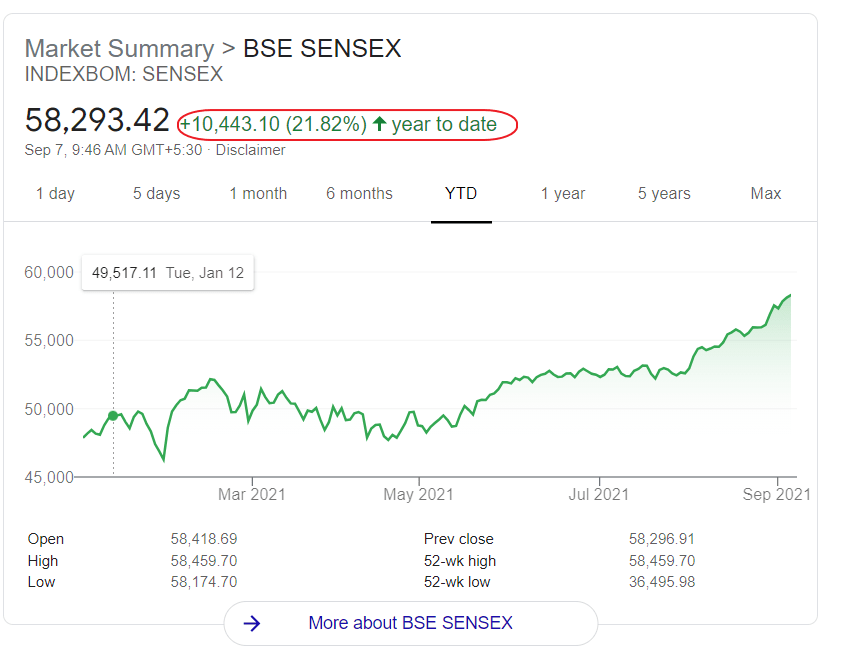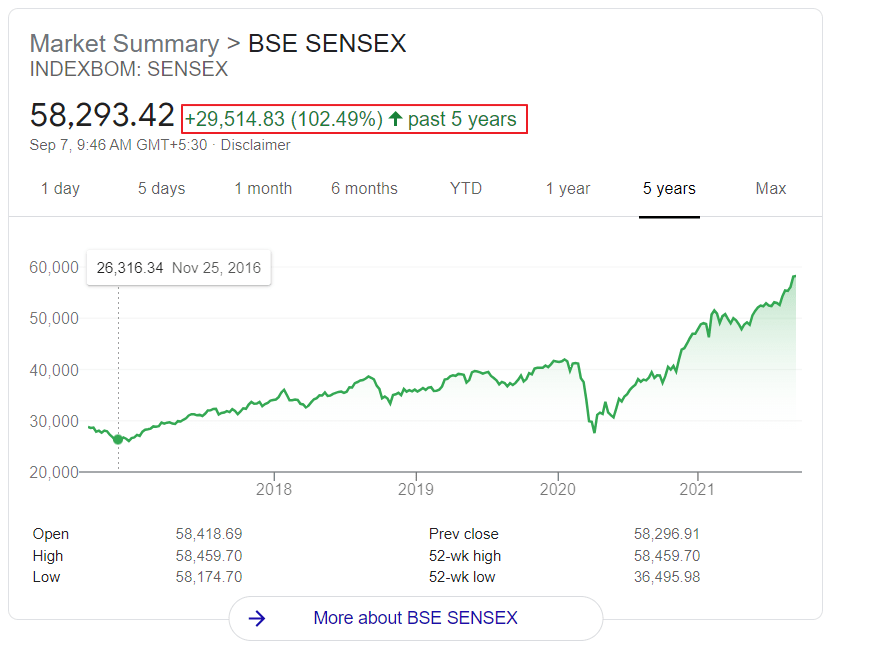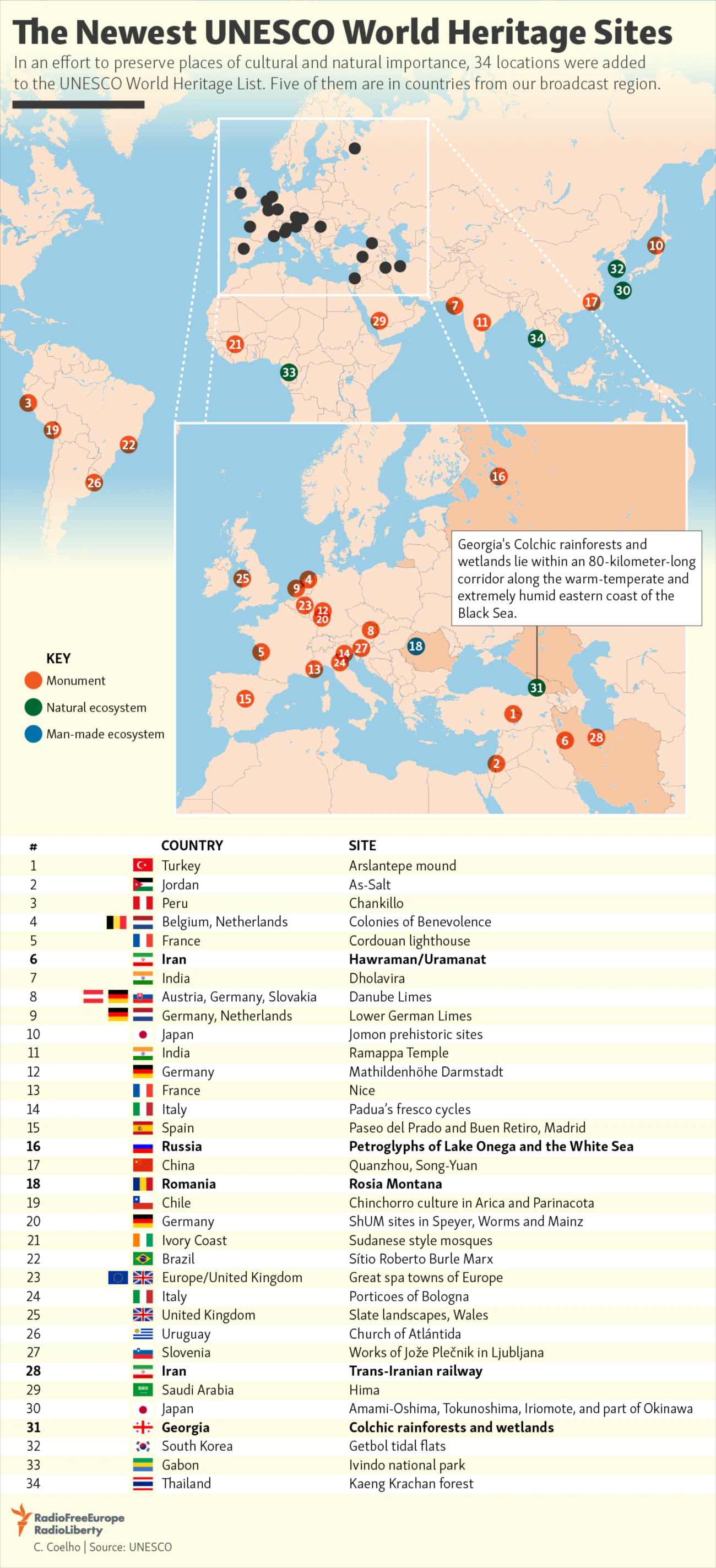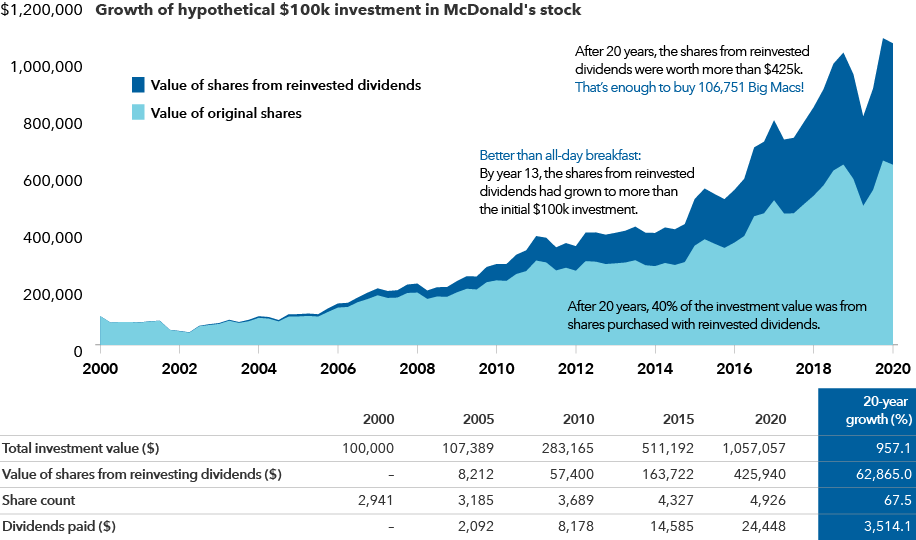The Indian equity market has performed very well this year. The benchmark Sensex has shot up over 21% year-to-date. In the past five years the index has more than doubled. Today the index reached a new high of 58,459.70 before retreating.
Sensex year-to-date return:
Sensex 5-year return:
Source: Google Finance
- Related:
- Is now a good time to invest in India?, Fidelity UK
- The Complete List of Indian ADRs on the US markets
- The S&P BSE Sensex Annual Returns by Year and Charts
Disclosure: No positions



